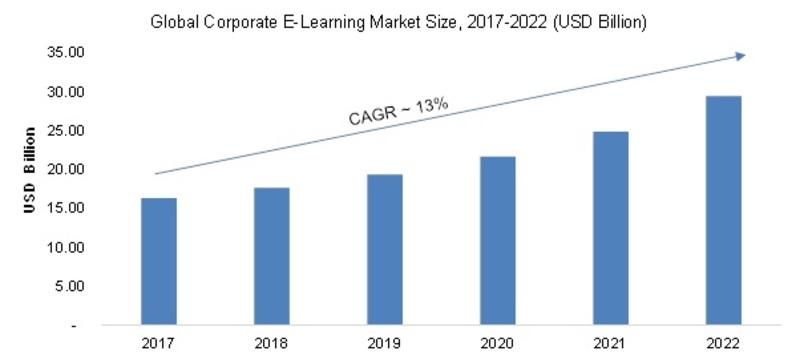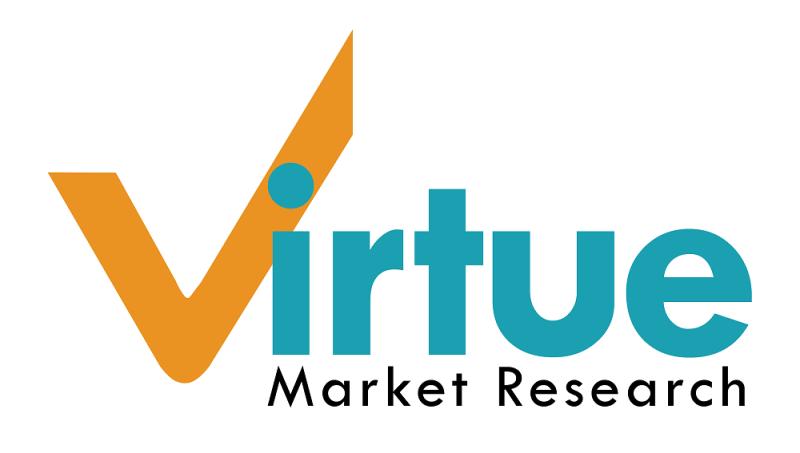Press release
Global Tempered Fire Resistant Glass Market is projected to reach the value of $4.3 Billion by 2030
According to the report published by Virtue Market Research in 2022, the Global Tempered Fire Resistant Glass Market was valued at USD 2.2 billion and is projected to reach a market size of USD 4.3 billion by 2030. Over the forecast period of 2023-2030, the market is projected to grow at a CAGR of 8.8%.
Request Sample Copy of this Report @ https://virtuemarketresearch.com/report/tempered-fire-resistant-glass-market/request-sample
One of the enduring driving forces behind the Tempered Fire Resistant Glass market is the stringent safety regulations imposed by governments and authorities. As urbanization continues to reshape skylines and create densely populated areas, the need for enhanced safety measures escalates. Building codes and regulations have evolved to require the incorporation of fire-resistant materials, including tempered fire-resistant glass, in structures to mitigate the risk of fire-related disasters. These regulations ensure that buildings, especially high-rises and public spaces, are equipped to withstand fires and provide safe evacuation routes for occupants. As cities expand, this long-term market driver remains robust, fueling the demand for tempered fire-resistant glass.
The COVID-19 pandemic, a global crisis that disrupted economies and industries, had an unexpected impact on the Tempered Fire Resistant Glass market. In the short term, as the construction industry grappled with supply chain disruptions and labor shortages, the demand for fire-resistant glass witnessed fluctuations. Delays in construction projects and reduced budgets led to a temporary slowdown in the market. However, the pandemic also brought to the forefront the importance of safety in enclosed spaces. As people sought refuge indoors, fire safety emerged as a critical concern. This awareness has subsequently spurred discussions and investments in improving fire-resistant measures, including the use of tempered fire-resistant glass, in buildings.
A significant short-term market driver is the retrofitting of existing structures with tempered fire-resistant glass. As urban areas continue to grow and age, many older buildings may not meet modern safety standards. Retrofitting, the process of enhancing a building's safety features without extensive reconstruction, has gained prominence.
Building owners and authorities are increasingly opting to retrofit structures with tempered fire-resistant glass to bring them in line with current safety regulations. This trend not only enhances safety but also presents a substantial market opportunity for manufacturers and suppliers of tempered fire-resistant glass.
An opportunity that holds promise in the Tempered Fire Resistant Glass market is the development of sustainable fire-resistant solutions. With growing environmental consciousness, the construction industry is actively seeking materials that not only meet safety requirements but also align with sustainability goals. Manufacturers have the opportunity to innovate and offer fire-resistant glass products that incorporate recycled materials and have a reduced carbon footprint. As sustainable construction practices gain traction, tempered fire-resistant glass manufacturers can position themselves as contributors to eco-friendly building solutions.
A notable trend in the industry is the integration of smart technologies into tempered fire-resistant glass systems. As buildings become smarter and more connected, there is a growing demand for fire-resistant glass that can communicate with building management systems. Smart fire-resistant glass can offer real-time monitoring, smoke detection, and automatic activation of safety measures in the event of a fire. This trend aligns with the broader movement toward smart buildings and adds an additional layer of safety and convenience to fire-resistant solutions.
Segmentation Analysis:
The global Tempered Fire Resistant Glass Market segmentation includes:
By Solution Type: Glazing, Insulation
Glazing involves the use of tempered fire-resistant glass as a protective barrier, often installed in windows and facades of buildings. This segment accounts for a substantial portion of the market and is considered the largest in terms of solution types. The use of tempered fire-resistant glass for glazing is vital for maintaining visibility, aesthetics, and safety in architectural designs.
On the other hand, the Insulation segment is gaining traction as the fastest-growing solution type within the Tempered Fire Resistant Glass market. Insulation solutions are designed to prevent the spread of fire, smoke, and heat within a structure. This is achieved by using tempered fire-resistant glass with special insulating properties. As fire safety regulations become more stringent, the demand for insulation solutions is on the rise, making it the fastest-growing segment in the market.
By End-User: Construction, Automotive, Marine, and Others
The Tempered Fire Resistant Glass market serves a diverse range of end-users, each with its unique requirements and applications. Among these, the Construction sector stands out as the largest consumer of tempered fire-resistant glass. In construction, the use of fire-resistant glass is mandated by safety regulations, particularly in high-rise buildings, public spaces, and structures with a high occupancy load. The Construction segment has consistently driven demand for tempered fire-resistant glass, making it the largest end-user segment in the market.
While Construction dominates the market, the Automotive sector is emerging as the fastest-growing end-user segment. Automotive manufacturers are increasingly incorporating tempered fire-resistant glass into their vehicle designs to enhance safety. This includes the use of fire-resistant glass in windshields and windows to mitigate fire hazards in the event of accidents. The growing emphasis on vehicle safety and the integration of advanced features are propelling the demand for tempered fire-resistant glass in the Automotive sector.
In addition to Construction and Automotive, the Tempered Fire Resistant Glass market caters to the Marine industry, where safety measures are paramount due to the unique challenges posed by the marine environment. Marine vessels, including cruise ships and offshore platforms, require fire-resistant glass to safeguard passengers, crew, and assets. The use of tempered fire-resistant glass in marine applications ensures compliance with international safety standards.
The "Others" category encompasses a range of niche applications and end-users, including industrial facilities, aerospace, and specialized equipment. These segments, although smaller compared to Construction and Automotive, contribute to the diversity of the Tempered Fire Resistant Glass market.
Read More @ https://virtuemarketresearch.com/report/tempered-fire-resistant-glass-market
Regional Analysis:
Asia-Pacific stands as the largest region in the Tempered Fire Resistant Glass market. This dynamic region encompasses diverse economies, including China, India, Japan, South Korea, and Southeast Asian countries. The Asia-Pacific market is characterized by rapid urbanization, substantial construction activities, and stringent fire safety regulations. As a result, the demand for tempered fire-resistant glass in this region has soared.
China, in particular, has witnessed remarkable growth in construction and infrastructure development. The Chinese government's focus on building sustainable and safe structures has led to increased adoption of tempered fire-resistant glass in architectural designs. Moreover, the automotive industry in Asia-Pacific has been on the rise, further bolstering the demand for fire-resistant glass in vehicles.
The COVID-19 pandemic did have some impact on the Asia-Pacific market, causing temporary disruptions in the supply chain and construction activities. However, as the region gradually recovered from the pandemic, the market regained its momentum, driven by ongoing construction projects and the need for fire safety measures.
While Asia-Pacific leads the Tempered Fire Resistant Glass market, Middle East & Africa (MEA) emerges as the fastest-growing region during the forecast period. MEA comprises countries with diverse climatic conditions, including desert regions and coastal areas, where fire safety is of paramount importance.
The construction industry in the Middle East has been on a continuous upswing, driven by urbanization, infrastructure development, and tourism. High-rise buildings, luxury hotels, and commercial complexes in cities like Dubai, Abu Dhabi, and Riyadh have integrated tempered fire-resistant glass to ensure safety and compliance with fire codes.
Moreover, the oil and gas sector in the Middle East has also fueled the demand for fire-resistant glass. Offshore platforms and industrial facilities require robust fire safety measures, making tempered fire-resistant glass a crucial component in these environments.
The impact of COVID-19 in the Middle East & Africa region varied across countries. While some nations experienced temporary slowdowns in construction activities due to lockdowns and supply chain disruptions, others continued with major infrastructure projects, contributing to the region's overall growth.
North America, Europe, and South America also play vital roles in the Tempered Fire Resistant Glass market. North America, home to the United States and Canada, has a well-established construction sector with a strong focus on fire safety standards. The presence of leading automotive manufacturers further drives the adoption of fire-resistant glass in vehicles.
Europe, on the other hand, exhibits a mature market for tempered fire-resistant glass, with a significant presence in countries like Germany, France, the United Kingdom, and Italy. Strict building codes and regulations in Europe mandate the use of fire-resistant materials, sustaining demand in the construction sector.
South America, encompassing countries like Brazil and Argentina, showcases growing urbanization and infrastructure development, spurring the adoption of fire-resistant glass. The region also experiences the emergence of a robust automotive industry, contributing to the market's growth.
Latest Industry Developments:
• Companies in the Tempered Fire Resistant Glass market are increasingly focusing on product innovation and diversification to meet evolving customer demands. Recent developments in fire-resistant glass technology have led to the introduction of advanced products with enhanced safety features, such as higher fire ratings and improved energy efficiency. These innovations are driven by the need to comply with stringent fire safety regulations and sustainability requirements. For instance, manufacturers are developing multi-functional fire-resistant glass that not only provides fire protection but also offers acoustic insulation and solar control properties. Such advancements cater to the growing demand for sustainable and high-performance building materials. Additionally, diversification of product offerings allows companies to tap into new application areas, such as the automotive and marine industries, beyond the traditional construction sector. This strategic move enables companies to expand their customer base and reduce dependence on a single market segment.
• To enhance market share, companies are increasingly focusing on global expansion and market penetration strategies. This involves establishing a strong presence in key regional markets and expanding distribution networks. Recent developments in this regard include partnerships and collaborations with local distributors and construction companies. By forging strategic alliances, companies can gain access to new customer segments and leverage the existing market knowledge of local partners. This approach is particularly beneficial in regions with diverse regulatory requirements and construction practices.
Furthermore, investments in research and development centers and manufacturing facilities in strategic locations allow companies to cater to regional preferences and ensure timely product deliveries. By tailoring products to meet the specific needs of different markets, companies can gain a competitive advantage and strengthen their market position.
• Sustainability has become a prominent trend in the Tempered Fire Resistant Glass market, driven by increasing awareness of environmental concerns and the need for energy-efficient building solutions. Companies are proactively aligning their strategies with sustainability goals and regulatory requirements. Recent developments in this area include the use of eco-friendly materials and production processes to reduce the carbon footprint of fire-resistant glass products.
Additionally, companies are investing in certifications and testing to demonstrate compliance with green building standards and codes. Moreover, the development of fire-resistant glass that contributes to energy conservation and thermal insulation is gaining traction. These products are designed to enhance the overall energy efficiency of buildings while providing fire protection, aligning with the growing demand for sustainable construction solutions.
Customize the Full Report Based on Your Requirements @ https://virtuemarketresearch.com/report/tempered-fire-resistant-glass-market/customization
Contact Us:
Virtue Market Research
Kumar Plaza, #103, SRPF Rd, Ramtekadi, Pune, Maharashtra 411013, India
E-mail: megha@virtuemarketresearch.com
Phone: +1-917 436 1025
About Us:
Virtue Market Research stands at the forefront of strategic analysis, empowering businesses to navigate complex market landscapes with precision and confidence. Specializing in both syndicated and bespoke consulting services, we offer in-depth insights into the ever-evolving interplay between global demand and supply dynamics. Leveraging our expertise, businesses can identify emerging opportunities, discern critical trends, and make decisions that pave the way for future success.
Request Sample Copy of this Report @ https://virtuemarketresearch.com/report/tempered-fire-resistant-glass-market/request-sample
One of the enduring driving forces behind the Tempered Fire Resistant Glass market is the stringent safety regulations imposed by governments and authorities. As urbanization continues to reshape skylines and create densely populated areas, the need for enhanced safety measures escalates. Building codes and regulations have evolved to require the incorporation of fire-resistant materials, including tempered fire-resistant glass, in structures to mitigate the risk of fire-related disasters. These regulations ensure that buildings, especially high-rises and public spaces, are equipped to withstand fires and provide safe evacuation routes for occupants. As cities expand, this long-term market driver remains robust, fueling the demand for tempered fire-resistant glass.
The COVID-19 pandemic, a global crisis that disrupted economies and industries, had an unexpected impact on the Tempered Fire Resistant Glass market. In the short term, as the construction industry grappled with supply chain disruptions and labor shortages, the demand for fire-resistant glass witnessed fluctuations. Delays in construction projects and reduced budgets led to a temporary slowdown in the market. However, the pandemic also brought to the forefront the importance of safety in enclosed spaces. As people sought refuge indoors, fire safety emerged as a critical concern. This awareness has subsequently spurred discussions and investments in improving fire-resistant measures, including the use of tempered fire-resistant glass, in buildings.
A significant short-term market driver is the retrofitting of existing structures with tempered fire-resistant glass. As urban areas continue to grow and age, many older buildings may not meet modern safety standards. Retrofitting, the process of enhancing a building's safety features without extensive reconstruction, has gained prominence.
Building owners and authorities are increasingly opting to retrofit structures with tempered fire-resistant glass to bring them in line with current safety regulations. This trend not only enhances safety but also presents a substantial market opportunity for manufacturers and suppliers of tempered fire-resistant glass.
An opportunity that holds promise in the Tempered Fire Resistant Glass market is the development of sustainable fire-resistant solutions. With growing environmental consciousness, the construction industry is actively seeking materials that not only meet safety requirements but also align with sustainability goals. Manufacturers have the opportunity to innovate and offer fire-resistant glass products that incorporate recycled materials and have a reduced carbon footprint. As sustainable construction practices gain traction, tempered fire-resistant glass manufacturers can position themselves as contributors to eco-friendly building solutions.
A notable trend in the industry is the integration of smart technologies into tempered fire-resistant glass systems. As buildings become smarter and more connected, there is a growing demand for fire-resistant glass that can communicate with building management systems. Smart fire-resistant glass can offer real-time monitoring, smoke detection, and automatic activation of safety measures in the event of a fire. This trend aligns with the broader movement toward smart buildings and adds an additional layer of safety and convenience to fire-resistant solutions.
Segmentation Analysis:
The global Tempered Fire Resistant Glass Market segmentation includes:
By Solution Type: Glazing, Insulation
Glazing involves the use of tempered fire-resistant glass as a protective barrier, often installed in windows and facades of buildings. This segment accounts for a substantial portion of the market and is considered the largest in terms of solution types. The use of tempered fire-resistant glass for glazing is vital for maintaining visibility, aesthetics, and safety in architectural designs.
On the other hand, the Insulation segment is gaining traction as the fastest-growing solution type within the Tempered Fire Resistant Glass market. Insulation solutions are designed to prevent the spread of fire, smoke, and heat within a structure. This is achieved by using tempered fire-resistant glass with special insulating properties. As fire safety regulations become more stringent, the demand for insulation solutions is on the rise, making it the fastest-growing segment in the market.
By End-User: Construction, Automotive, Marine, and Others
The Tempered Fire Resistant Glass market serves a diverse range of end-users, each with its unique requirements and applications. Among these, the Construction sector stands out as the largest consumer of tempered fire-resistant glass. In construction, the use of fire-resistant glass is mandated by safety regulations, particularly in high-rise buildings, public spaces, and structures with a high occupancy load. The Construction segment has consistently driven demand for tempered fire-resistant glass, making it the largest end-user segment in the market.
While Construction dominates the market, the Automotive sector is emerging as the fastest-growing end-user segment. Automotive manufacturers are increasingly incorporating tempered fire-resistant glass into their vehicle designs to enhance safety. This includes the use of fire-resistant glass in windshields and windows to mitigate fire hazards in the event of accidents. The growing emphasis on vehicle safety and the integration of advanced features are propelling the demand for tempered fire-resistant glass in the Automotive sector.
In addition to Construction and Automotive, the Tempered Fire Resistant Glass market caters to the Marine industry, where safety measures are paramount due to the unique challenges posed by the marine environment. Marine vessels, including cruise ships and offshore platforms, require fire-resistant glass to safeguard passengers, crew, and assets. The use of tempered fire-resistant glass in marine applications ensures compliance with international safety standards.
The "Others" category encompasses a range of niche applications and end-users, including industrial facilities, aerospace, and specialized equipment. These segments, although smaller compared to Construction and Automotive, contribute to the diversity of the Tempered Fire Resistant Glass market.
Read More @ https://virtuemarketresearch.com/report/tempered-fire-resistant-glass-market
Regional Analysis:
Asia-Pacific stands as the largest region in the Tempered Fire Resistant Glass market. This dynamic region encompasses diverse economies, including China, India, Japan, South Korea, and Southeast Asian countries. The Asia-Pacific market is characterized by rapid urbanization, substantial construction activities, and stringent fire safety regulations. As a result, the demand for tempered fire-resistant glass in this region has soared.
China, in particular, has witnessed remarkable growth in construction and infrastructure development. The Chinese government's focus on building sustainable and safe structures has led to increased adoption of tempered fire-resistant glass in architectural designs. Moreover, the automotive industry in Asia-Pacific has been on the rise, further bolstering the demand for fire-resistant glass in vehicles.
The COVID-19 pandemic did have some impact on the Asia-Pacific market, causing temporary disruptions in the supply chain and construction activities. However, as the region gradually recovered from the pandemic, the market regained its momentum, driven by ongoing construction projects and the need for fire safety measures.
While Asia-Pacific leads the Tempered Fire Resistant Glass market, Middle East & Africa (MEA) emerges as the fastest-growing region during the forecast period. MEA comprises countries with diverse climatic conditions, including desert regions and coastal areas, where fire safety is of paramount importance.
The construction industry in the Middle East has been on a continuous upswing, driven by urbanization, infrastructure development, and tourism. High-rise buildings, luxury hotels, and commercial complexes in cities like Dubai, Abu Dhabi, and Riyadh have integrated tempered fire-resistant glass to ensure safety and compliance with fire codes.
Moreover, the oil and gas sector in the Middle East has also fueled the demand for fire-resistant glass. Offshore platforms and industrial facilities require robust fire safety measures, making tempered fire-resistant glass a crucial component in these environments.
The impact of COVID-19 in the Middle East & Africa region varied across countries. While some nations experienced temporary slowdowns in construction activities due to lockdowns and supply chain disruptions, others continued with major infrastructure projects, contributing to the region's overall growth.
North America, Europe, and South America also play vital roles in the Tempered Fire Resistant Glass market. North America, home to the United States and Canada, has a well-established construction sector with a strong focus on fire safety standards. The presence of leading automotive manufacturers further drives the adoption of fire-resistant glass in vehicles.
Europe, on the other hand, exhibits a mature market for tempered fire-resistant glass, with a significant presence in countries like Germany, France, the United Kingdom, and Italy. Strict building codes and regulations in Europe mandate the use of fire-resistant materials, sustaining demand in the construction sector.
South America, encompassing countries like Brazil and Argentina, showcases growing urbanization and infrastructure development, spurring the adoption of fire-resistant glass. The region also experiences the emergence of a robust automotive industry, contributing to the market's growth.
Latest Industry Developments:
• Companies in the Tempered Fire Resistant Glass market are increasingly focusing on product innovation and diversification to meet evolving customer demands. Recent developments in fire-resistant glass technology have led to the introduction of advanced products with enhanced safety features, such as higher fire ratings and improved energy efficiency. These innovations are driven by the need to comply with stringent fire safety regulations and sustainability requirements. For instance, manufacturers are developing multi-functional fire-resistant glass that not only provides fire protection but also offers acoustic insulation and solar control properties. Such advancements cater to the growing demand for sustainable and high-performance building materials. Additionally, diversification of product offerings allows companies to tap into new application areas, such as the automotive and marine industries, beyond the traditional construction sector. This strategic move enables companies to expand their customer base and reduce dependence on a single market segment.
• To enhance market share, companies are increasingly focusing on global expansion and market penetration strategies. This involves establishing a strong presence in key regional markets and expanding distribution networks. Recent developments in this regard include partnerships and collaborations with local distributors and construction companies. By forging strategic alliances, companies can gain access to new customer segments and leverage the existing market knowledge of local partners. This approach is particularly beneficial in regions with diverse regulatory requirements and construction practices.
Furthermore, investments in research and development centers and manufacturing facilities in strategic locations allow companies to cater to regional preferences and ensure timely product deliveries. By tailoring products to meet the specific needs of different markets, companies can gain a competitive advantage and strengthen their market position.
• Sustainability has become a prominent trend in the Tempered Fire Resistant Glass market, driven by increasing awareness of environmental concerns and the need for energy-efficient building solutions. Companies are proactively aligning their strategies with sustainability goals and regulatory requirements. Recent developments in this area include the use of eco-friendly materials and production processes to reduce the carbon footprint of fire-resistant glass products.
Additionally, companies are investing in certifications and testing to demonstrate compliance with green building standards and codes. Moreover, the development of fire-resistant glass that contributes to energy conservation and thermal insulation is gaining traction. These products are designed to enhance the overall energy efficiency of buildings while providing fire protection, aligning with the growing demand for sustainable construction solutions.
Customize the Full Report Based on Your Requirements @ https://virtuemarketresearch.com/report/tempered-fire-resistant-glass-market/customization
Contact Us:
Virtue Market Research
Kumar Plaza, #103, SRPF Rd, Ramtekadi, Pune, Maharashtra 411013, India
E-mail: megha@virtuemarketresearch.com
Phone: +1-917 436 1025
About Us:
Virtue Market Research stands at the forefront of strategic analysis, empowering businesses to navigate complex market landscapes with precision and confidence. Specializing in both syndicated and bespoke consulting services, we offer in-depth insights into the ever-evolving interplay between global demand and supply dynamics. Leveraging our expertise, businesses can identify emerging opportunities, discern critical trends, and make decisions that pave the way for future success.
Permanent link to this press release:
Copy
Please set a link in the press area of your homepage
to this press release on woodPRI. woodPRI disclaims liability for any content contained in
this release.
Recommend

/newsMicroencapsulation Market Deep Analysis on Key Players - Dow Corning, Encapsys, Syngenta Crop Protection, Evonik Industries, 3M and Bayer
Market Study Report Adds Global Microencapsulation Market Size, Status and Forecast 2024 added to its database. The report provides key statistics on the current state of the industry and other analytical data to understand the market.
Extensive research is required for choosing the appropriate cor...

/newsGermany Airbag Market Size 2023: Global Share, Industry And Report Analysis By 2030 | Hyundai Mobis Co., Ltd. Key Safety Systems, Inc. Robert Bosch GmbH
Germany airbag market is expected to grow at a CAGR of around 6% during the forecast period. Germany Airbag Market research report refers to gathering and analyzing significant market data serve as best medium for various industry players to launch novel product or service. It is vital for key firms...

/newsSecurities Brokerages And Stock Exchanges Market Outlook 2021: Big Things are Happening
A new intelligence report released by HTF MI with title "Global Securities Brokerages And Stock Exchanges Market Survey & Outlook" is designed covering micro level of analysis by Insurers and key business segments, offerings and sales channels. The Global Securities Brokerages And Stock Exchange...

/newsRenewable Chemicals Market Emerging Trends and Competitive Landscape Forecast to 2028
The renewable chemicals market was valued at US$ 80,566.30 million in 2021 and is projected to reach US$ 1,76,750.76 million by 2028 it is expected to grow at a CAGR of 11.9% from 2021 to 2028. The research report focuses on the current market trends, opportunities, future potential of the market, a...

/newsHow Coronavirus is Impacting Cold Brew Coffee, Global Market Volume Analysis, Size, Share and Key Trends 2020-2026
"Market Latest Research Report 2020:
Los Angles United States, February 2020: The Cold Brew Coffee market has been garnering remarkable momentum in the recent years. The steadily escalating demand due to improving purchasing power is projected to bode well for the global market. QY Research's lates...

/newsCorporate E-Learning Market - Global Industry Size, Share, Key Players Analysis that are Infor, SkillSoft Corporation, Adrenna, CERTPOINT Systems and others with Regional Forecast to 2022
Overview:
E-Learning is used to enhance the learning procedures for newer job requirements and to make employees sound about the internal and external changes in the market and respective organizations. This method has created considerable differences in the ways of training and developing employee...
